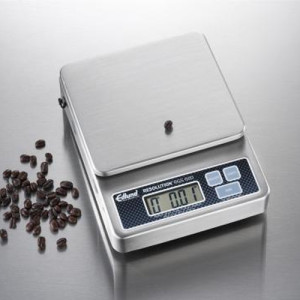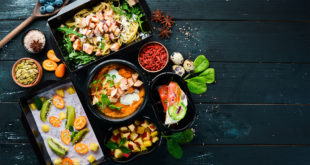Picture your next outing to a new restaurant or eatery. Mouths watering, you and your dinner companions order the same large entrees based on similar tastes and growling stomachs. As your succulent steaks make their way to the table, you notice your friend to the left has a small spoonful of potatoes overshadowed by an over-sized steak. On the opposite side, your friend to the right sheds a tear when he sees his small piece of beef half hidden behind a heaping wall of potatoes. While you’re plate looks just right, you chuckle at how disproportionately different the three meals are, and how each of you paid the same price.
Now extend this imaginary dinner outing to the typical guest experience at your own establishment. Are the two uncannily similar? From an operational standpoint, how can you calculate margins and accurately tally expenses when each plate sent out is proportioned differently? The short answer is, you can’t.
Controlling the portions you provide your customers is an easily overlooked but extremely important way to cut costs and preserve your restaurant’s margin. Amid the hustle and bustle of today’s high-energy commercial kitchens it’s essential to have a tried-and-true method of keeping the portions your staff dishes out exact.
One place to weight watch when it comes to portions is proteins. Outfitting your kitchen with the right restaurant equipment is important, and a quality portion scale is a great way to keep an eye on what is probably the most expensive item on your entrée plates. Pop that protein onto a portion scale to quickly and easily stretch your product as far as it can go.
way to keep an eye on what is probably the most expensive item on your entrée plates. Pop that protein onto a portion scale to quickly and easily stretch your product as far as it can go.
Starches, veggies, and soups are highly susceptible to varied portions. What is shrugged off as an additional carrot or extra green may be adding up to cost you thousands of dollars in lost revenue every year! The simplest way to take control of these portion sizes is to utilize a handful of portion measuring utensils. Using a specific disher, Spoodle, Loon, or ladle for certain food items, and always using that same sized utensil, will help you avoid over serving.
Water use is often undervalued and overlooked. Restaurants use a lot of water, it’s a fact. From washing dishes and tables to cooking and serving guests, water output eats up a nice chunk of your monthly budget whether you realize it or not. An excellent way to save, and also help your establishment be greener, is to watch your water. Here are 5 sensible tips to help you do just that:
Fix leaky faucets – don’t let that drip drain your budget!
Wash full racks only – it’s a no-brainer, but you’d be surprised how often a member of your staff starts a half-filled rack through the washer.
Use a foot pedal for hand washing sinks – foot or knee pedals are a great way to avoid waste. They not only give your staff a sanitary way to operate the sink, but also shut off automatically to instantly help you save.
Landscape with conservation in mind – water outside can be as costly, if not more, than water inside. Keep that in mind when you’re adding a flower garden or line of decorative shrubs to the outside of your establishment.
Train employees – without the help of your employees your conservation plan is just a plan. Make sure each employee knows where your business stands when it comes to conserving.
 BONUS: Spread the word –people love to hear when steps are taken to be more environmentally conscious. If you’ve made changes to how you do things, and these changes have a positive effect on the surrounding community, don’t be ashamed to toot your own horn and let people know!
BONUS: Spread the word –people love to hear when steps are taken to be more environmentally conscious. If you’ve made changes to how you do things, and these changes have a positive effect on the surrounding community, don’t be ashamed to toot your own horn and let people know!
So when it comes to portion control it’s time for you to be in control. As a basis for calculating your restaurant’s profitability, portioning out your product is essential to keeping your margins low and your plates consistent. Effective portion control is easier than you think and is a good way to accurately assume where your expenses will sit each month. Without a proper portion control method in place you end up gambling with these assumptions, and in the restaurant industry it’s often these kinds of gambles that can make or break you. Why not sway the odds in your favor as much as possible?
 Corner Booth Blog | TundraFMP Restaurant Supply, News & Equipment Blog
Corner Booth Blog | TundraFMP Restaurant Supply, News & Equipment Blog



